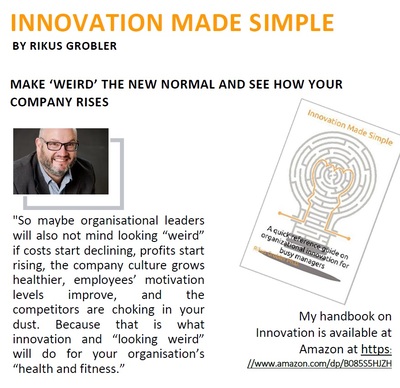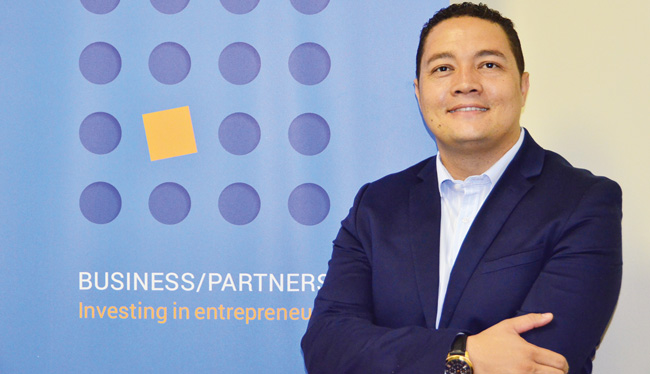
If fast-tracking a project is important, resort to ‘crashing’

By Rikus Grobler, www.nis.co.na, [email protected].
I covered innovation execution in the last five deliveries and I want to conclude this topic by discussing how organisations can fast track execution when necessary.
I am saying “when necessary” because most organisations have a natural rhythm of doing things and delivering projects, but sometimes time is of the essence, and you have to deliver fast. Speed and innovation are critical success factors in today’s world. Being able to innovate quickly and cheaply, test products and services in the market, refine them, and release them on a regular basis has become a competitive advantage.
Methodologies like Agile and integration of product development with IT operations (commonly referred to as DevOps) have been developed to speed up this “natural rhythm” of delivery in organisations.
What I am referring to here is when rapid execution is required for example when you have to move fast due to a competitor catching you off guard, exploiting a specific opportunity like reduced pricing of a raw material, a new technology that becomes available, or like we all have now experienced with the outbreak of the Covid-19 pandemic.
In project management, there is a specific term for fast-tracking a project, namely “crashing” a project. Without going into too much detail, crashing is a technique in which resources are added to the project for the least cost possible. Cost and schedule trade-offs are analyzed to determine how to obtain the greatest amount of schedule compression for the least incremental cost.
To give a crude example: Say you have to build a wall in two weeks with one bricklayer, but now you have to build it in one week. You will have to add an extra bricklayer to deliver the project in half the time. Crashing a project will increase project cost, and the activities getting crashed have to be on the critical path of the project.
Crashing is a specialized technique involving careful analysis of network diagrams and doing a lot of “what if” calculations. Fortunately, these days there are advanced software applications available to assist with these types of analyses.
Not all innovation in organisations is delivered through projects, and not all organisations apply expert project management disciplines, so I would like to give a couple of suggestions of how organisations can go about to make innovation execution happen faster when time is of the essence.
In my experience, the issue that usually causes the most “friction” in organisations with regards to delivering innovation is the matter of prioritising work. Everyone believes their projects are the most important and should be delivered first, i.e., the available resources must be assigned to their projects.
Also, resources that are working on innovation usually reside in different departments e.g., IT, Marketing, Operations, etc., further complicating the decision of who must work on what project.
So, to speed up innovation execution, the first thing I recommend is that the decision-making authority for prioritising work must be centralised. To be more specific, there must be one “supreme commander” who takes the decisions on what gets done and assigns resources accordingly.
Easier said than done I know. Therefore, it is wise for organisations to have a protocol in place on how “critical” execution decisions will be taken, i.e., what defines a “critical” situation, who will be the responsible decision-maker, and the criteria that must be applied.
Second, communicating why specific actions are being taken to promote mutual understanding is crucial. If managers understand why their resources are being redeployed or why their projects are taking a back seat, it upholds cooperation and reduces conflict and time-wasting arguments.
Centralised decision making and diligent communication are high-level matters to speed up execution. Still, it is the foundation on which operational tactics for rapid implementation is build. Operational tactics for faster delivery will differ from project to project.
Still, some generic examples of operational tactics include: clearly define roles and responsibilities; provide time-saving tools; put quick feedback and correction loops in place; set small goals with short timelines; and track progress relentlessly.
I referred to the natural rhythm of execution above and that organisations have to advance this rhythm to stay competitive. The beauty of working on these “rapid execution” type of projects is that it will enable an organisation to learn what works and what doesn’t, which can then be applied to the larger system.
Next Time
Moving on from execution, I will continue with the subject of open innovation. In my view, open innovation has matured a lot and we have to take notice and exploit the potential of this innovation method.
I conclude with a quote from General George S. Patton: “A good plan, violently executed now is better than a perfect plan tomorrow.”
Click on the thumbnail below to order Dr Grobler’s e-book on Innovation from Amazon.













































